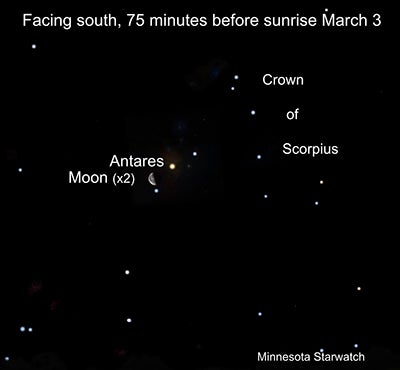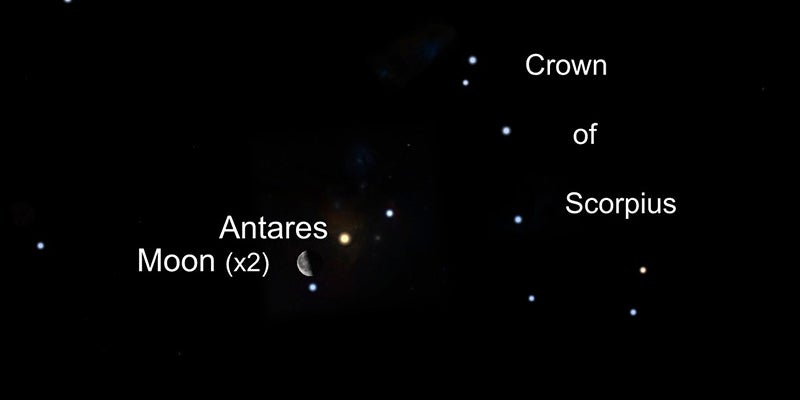Minnesota Starwatch: Giants of the winter constellations come out in March
Published 5:38 pm Tuesday, February 27, 2024
|
Getting your Trinity Audio player ready...
|
By Deane Morrison
In March the iconic winter constellations come out in the south to southwest at nightfall. If you haven’t seen them yet, grab a star chart and enjoy everything from brilliant Sirius, at the bottom of the array, to aloof and majestic Capella, which caps the assembly.
Compare these stars to Jupiter, the beacon to the west. To the east, the spring constellation Leo, the lion, rears up as if preparing to drive the winter stars westward. Watch the waxing moon pass Jupiter on the 13th and the Pleiades star cluster on the 14th. The evening of the 18th, the moon will be close to Pollux, the brighter Gemini twin.

Graphic provided
On the 16th, we get the highest first quarter moon of the year. This is no random event; at the spring equinox the Northern Hemisphere tilts most strongly toward the position of a first quarter moon. Conversely, on the 3rd a very low last quarter moon will appear in the southern predawn sky close to Antares, the red heart of Scorpius.
Both quarter moons make good objects for binocular viewing. Being so low, the last quarter phase will be easier on the neck muscles. However, it rises in the middle of the night and sets — depending on your location — approximately eight hours later, whereas the first quarter moon rises in mid-morning and is up for about twice as long.
The moon becomes full at 2 a.m. on March 25. Most of this full moon will pass through Earth’s penumbra—our planet’s light outer shadow. The penumbra will be hard to detect from Earth, but if you were on the moon you’d be watching a partial eclipse of the sun.
Spring arrives with the equinox at 10:06 p.m. on March 19. At that moment the sun crosses the equator on its journey north and Earth will be lighted from pole to pole.
The University of Minnesota offers public viewings of the night sky at its Duluth and Twin Cities campuses. For more information, see:
• Duluth, Marshall W. Alworth Planetarium: www.d.umn.edu/planet
• Twin Cities, Minnesota Institute for Astrophysics: www.astro.umn.edu/outreach/pubnight
• Check out astronomy programs, free telescope events, and planetarium shows at the
• University of Minnesota’s Bell Museum: www.bellmuseum.umn.edu/astronomy
Find U of M astronomers and links to the world of astronomy at: http://www.astro.umn.edu




